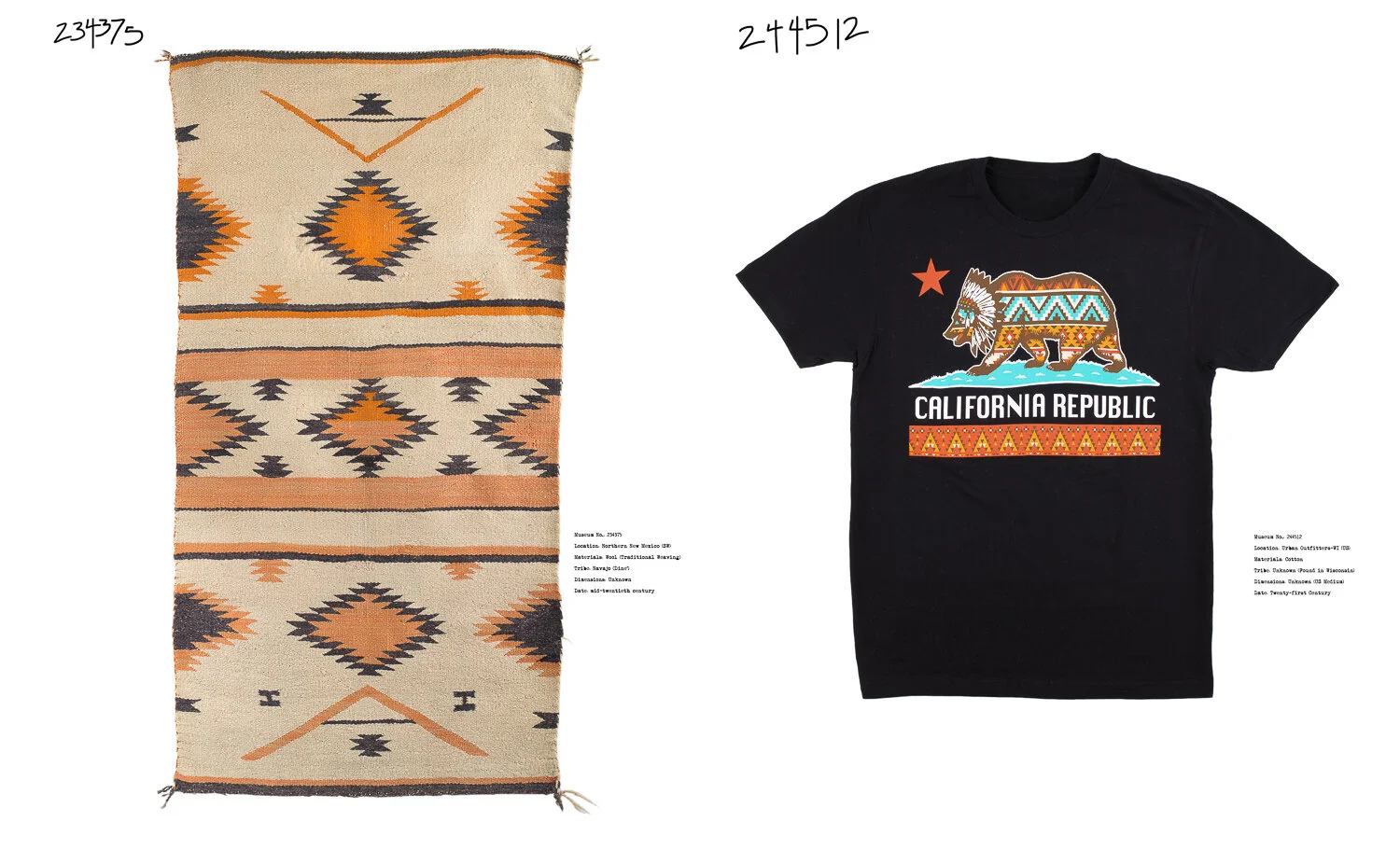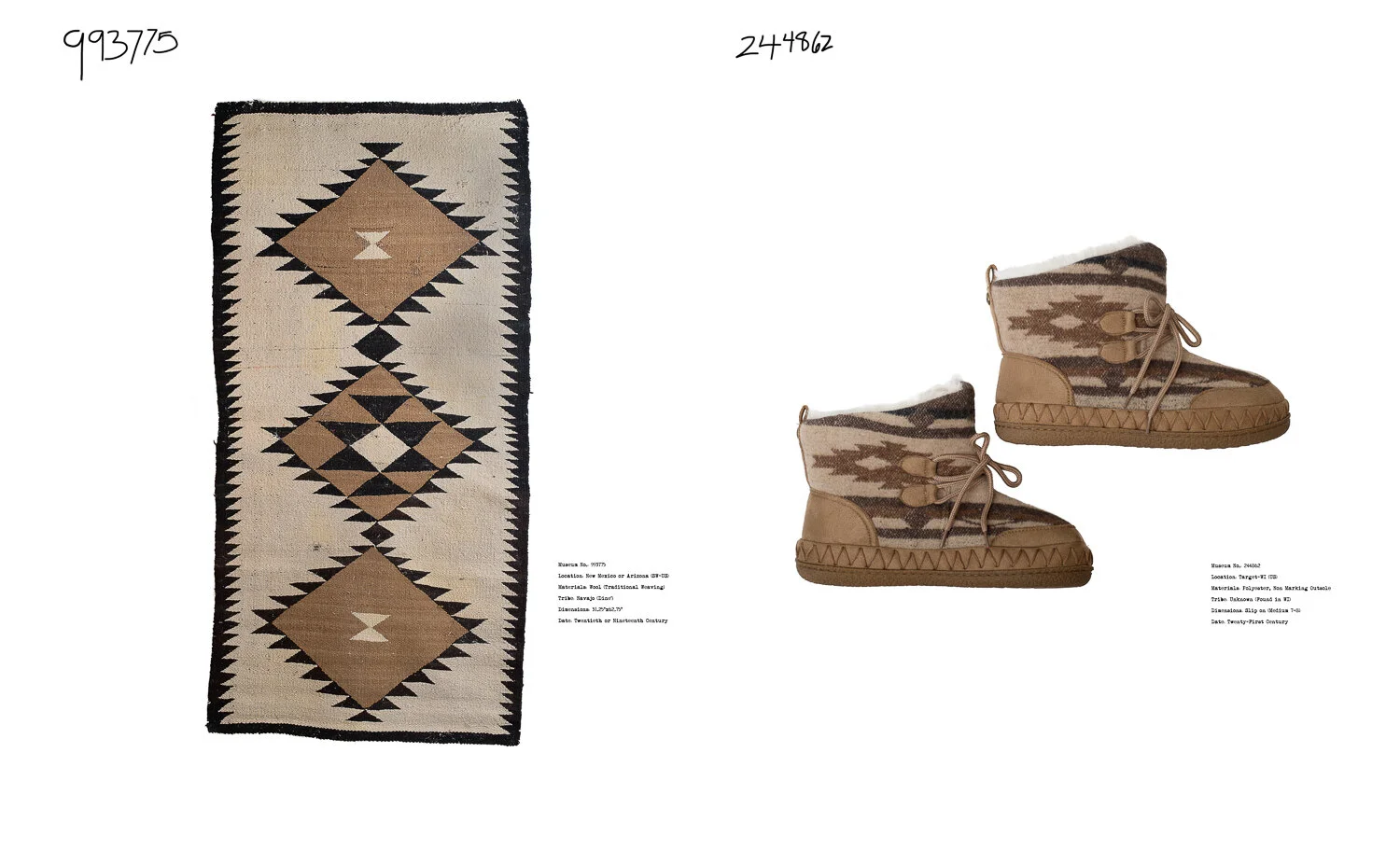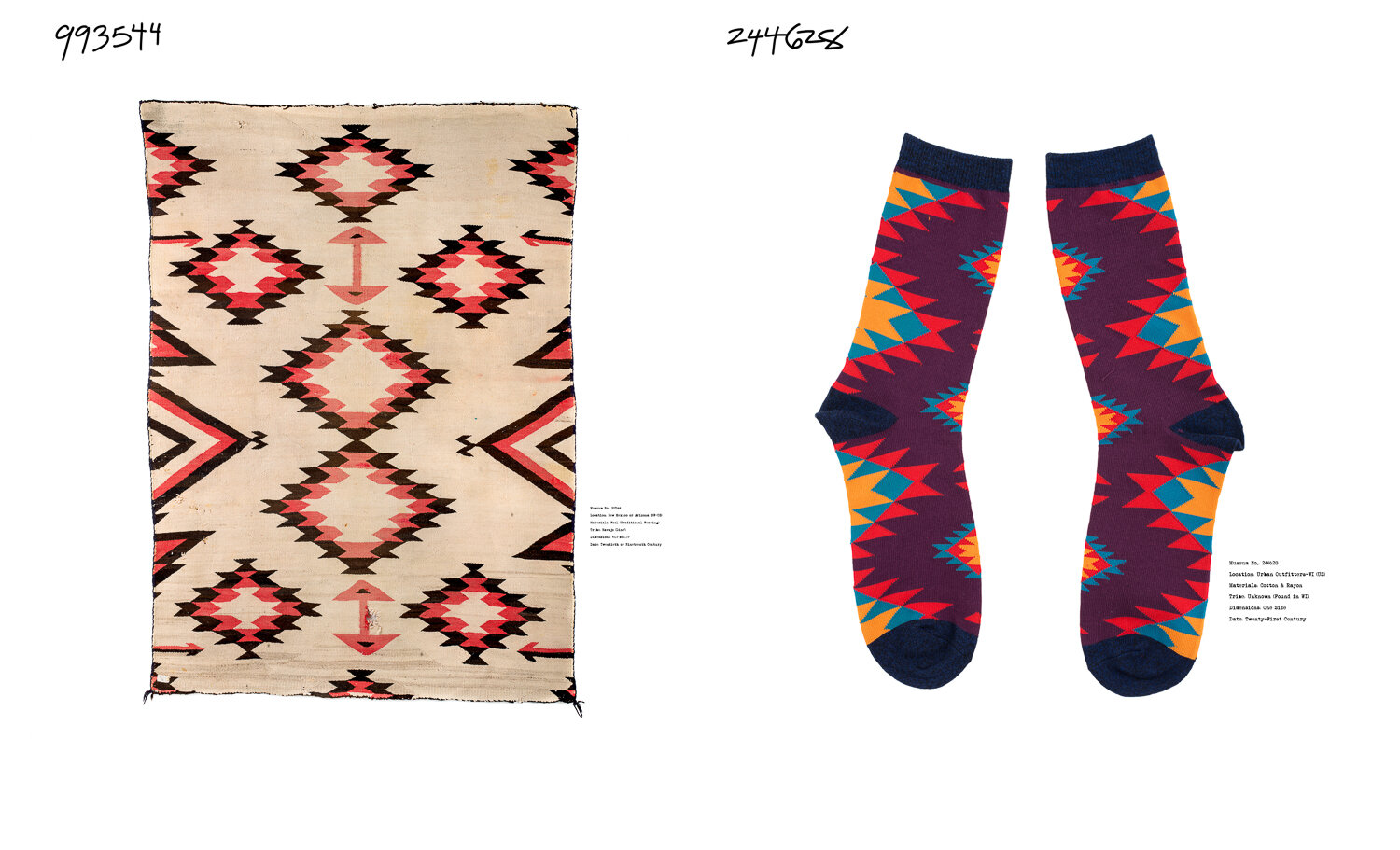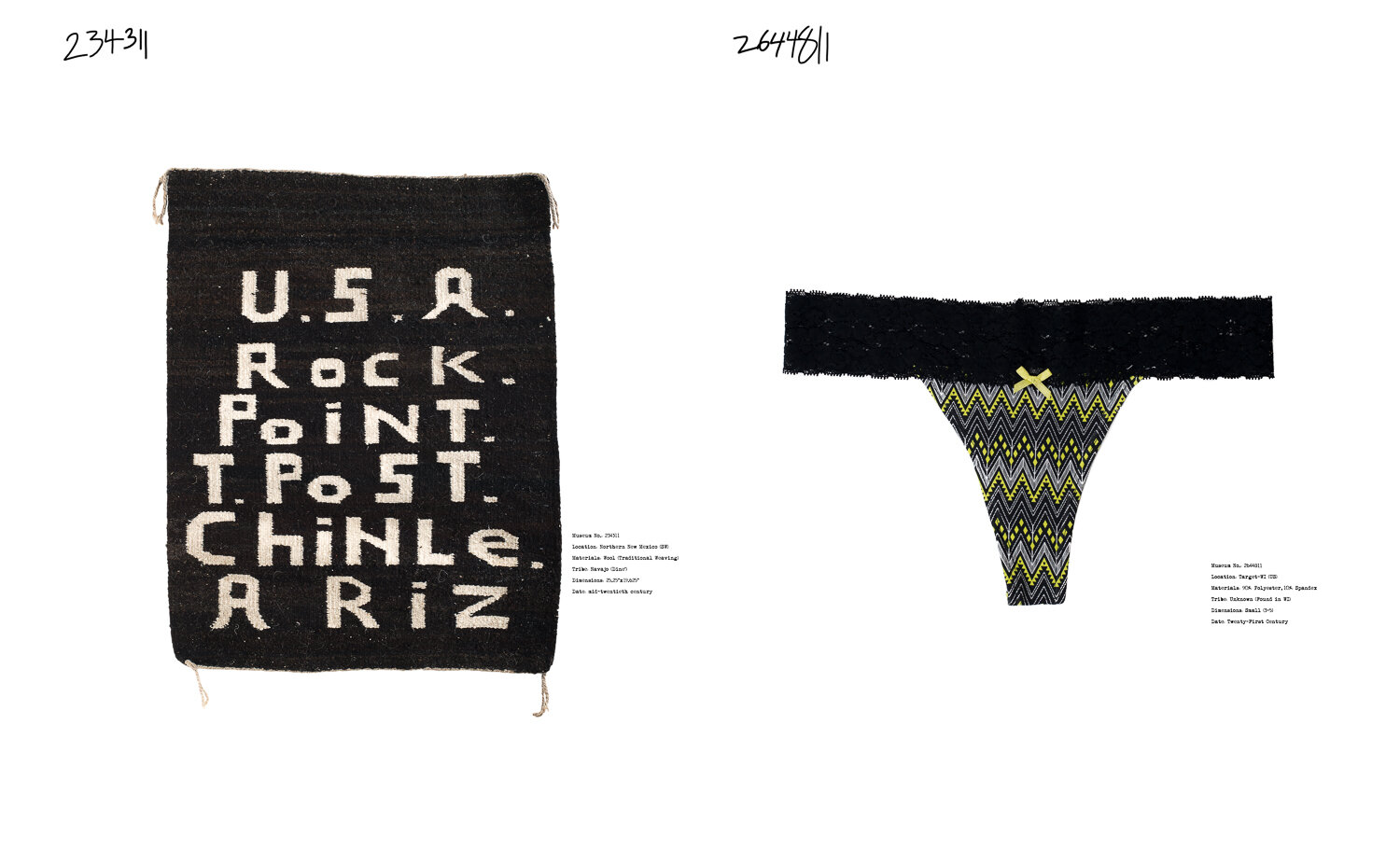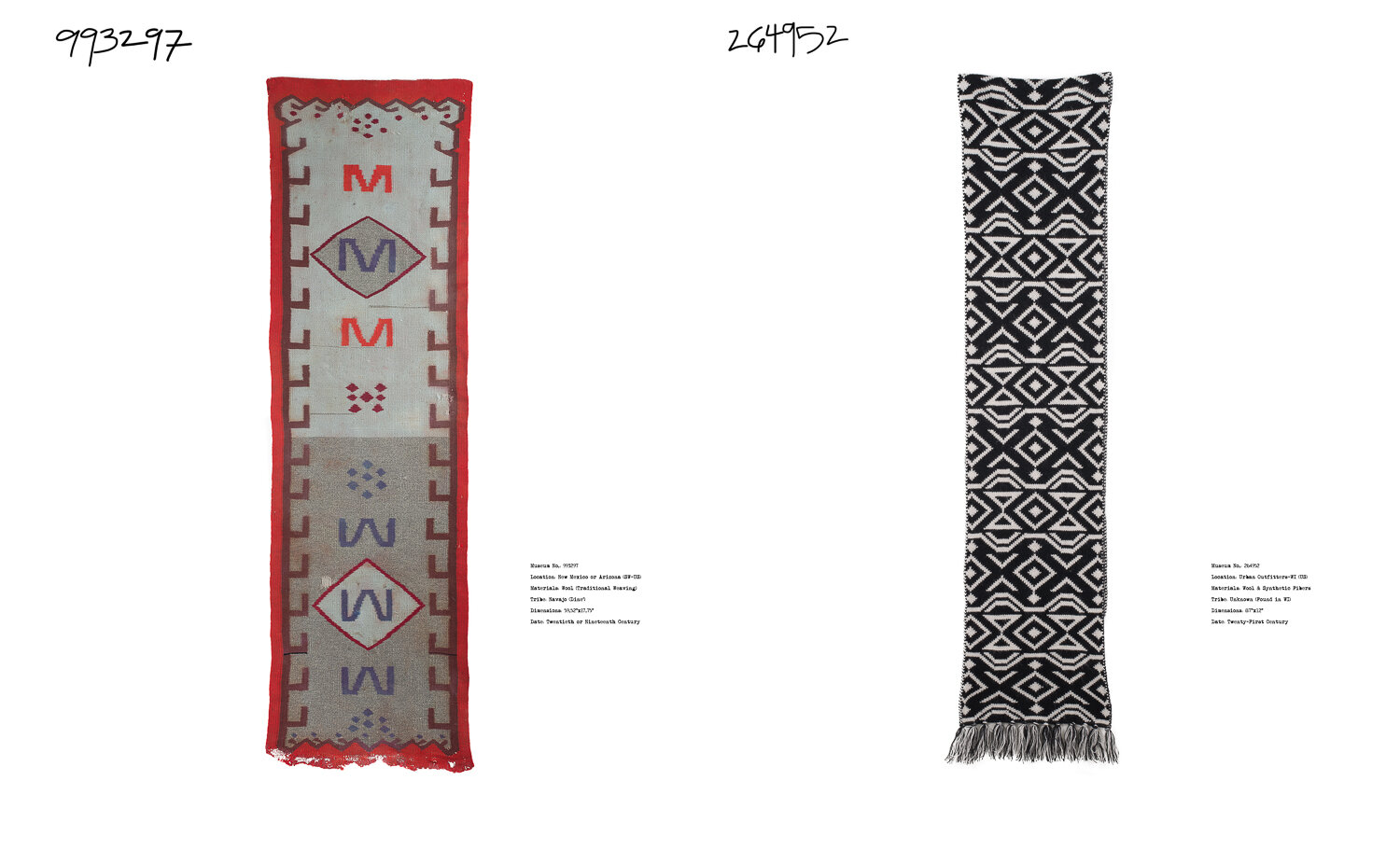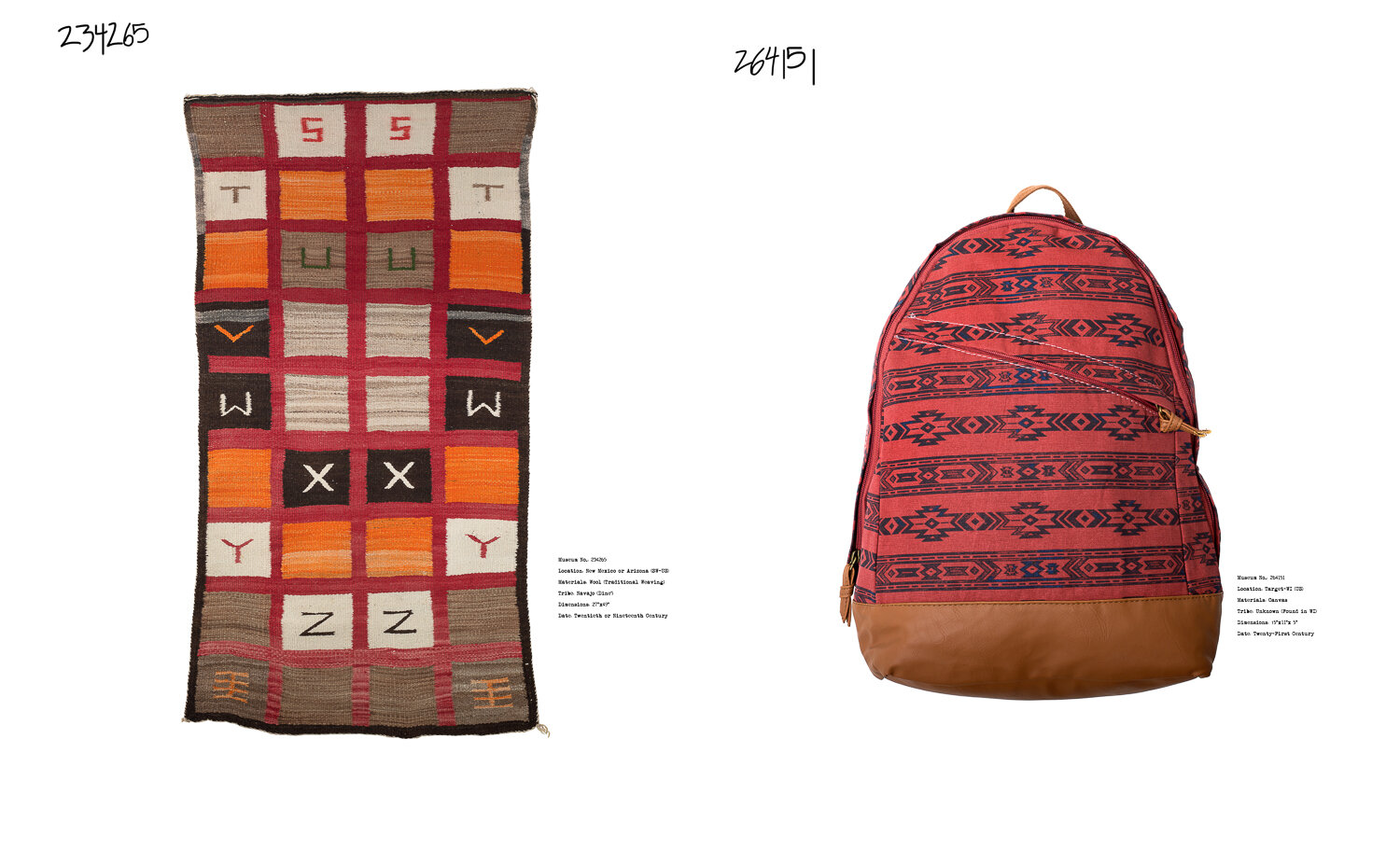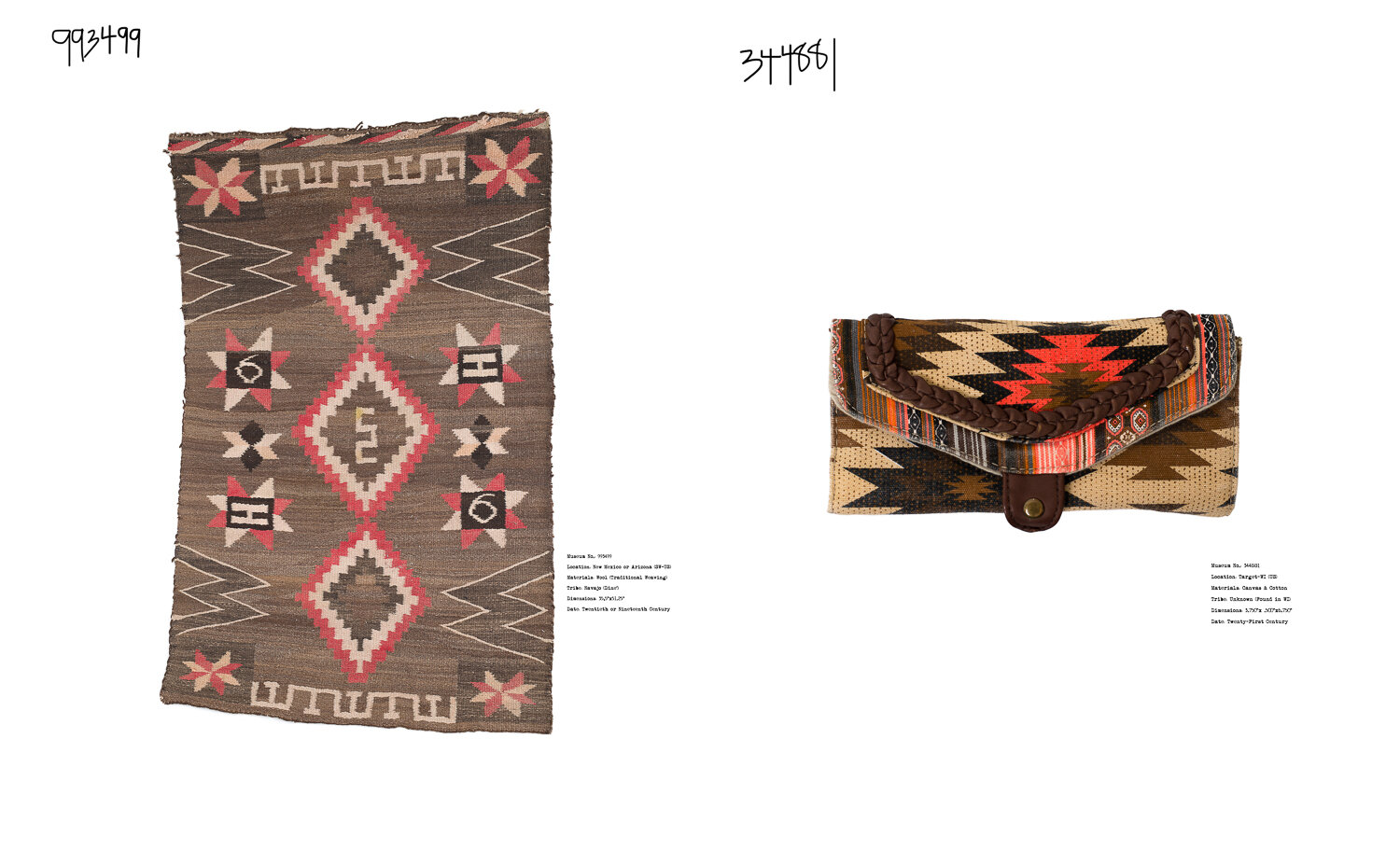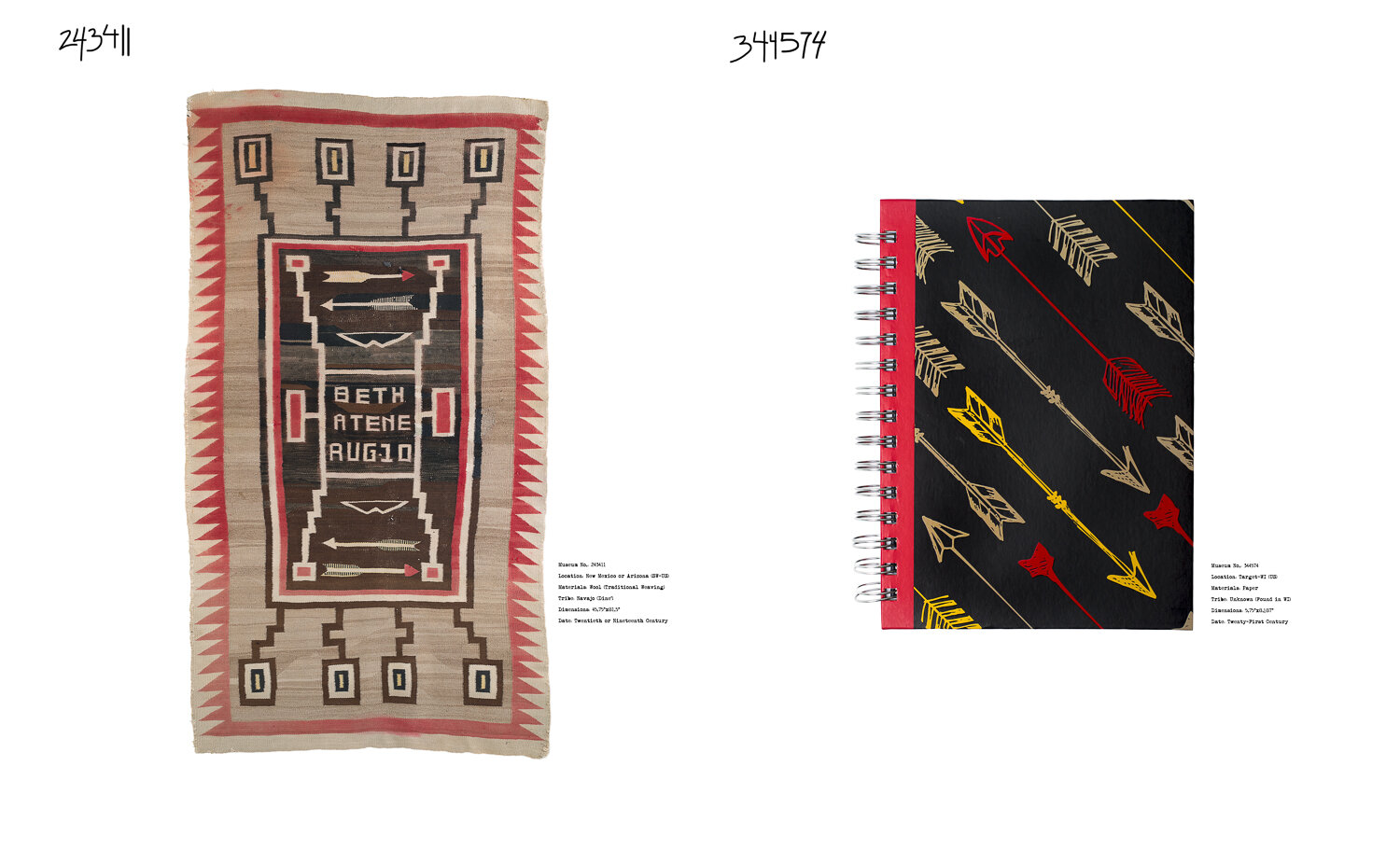“Appropriation occurs when someone else speaks for, tells, defines, describes, represents, uses, or recruits the images, stories, experiences, and dreams of others for their own. Appropriation also occurs when someone else becomes the expert on your experience and is deem as more knowledgeable about who you are than yourself.” -Loretta Todd (Métis)
There is a fine line between the idea of “inspiration” and “theft,” a controversial subject surrounding the rights of designs, within the discourse of cultural appropriation. The connection between design and culture is unique because the history of design itself has been filtered through many ethnic groups and has inspired countless others. Appropriation continues to be disputed between many groups on who owns rights to designs and symbols, of which the underlying issues have been distorted and misrepresented by mass-produced commodities today.
Usage of these designs is especially prevalent for Native American communities as well as other Indigenous cultures. Stereotypes continue to perpetuate negative connotations for Indigenous peoples, and it creates a displacement of Native identity in relation to culture. “For generations, images of Indians have been commonplace in American society. So much so that over time they have taken on the form of what Jean Baudrillard termed hyperreality-a world of self-referential signs that are very much a part of everyday life, which are infinitely reproducible and said to substitute for a “real” or “original” that does not now exist and perhaps never existed.” (Schwarz, Fighting Colonialism with Hegemonic Culture Native American Appropriation of Indian Stereotypes, 2013) Identity is difficult to understand because Indigenous people are creating resistance against cultural oppression, yet there still needs to be a reexamination of how Native people define themselves and whether or not they are buying into their own stereotypes.
The association to symbolism within Native cultures is held in high regard spiritually because each mark is a reference to either creation stories or ceremonies. For Indigenous cultures the existence of motifs have been passed down for thousands of years as well as adopted through many nations and communities. With that in mind, there are companies today that pull traditional design work, placing it on their merchandise and many contemporary Natives accept these companies as their own. This strange connection to native identity holds true to the company Pendleton. Originally a wool mill factory, the company branched out and decided to take Native American designs directly from tribes and superimpose them on their wool blankets. What is frustrating to hear about Pendleton’s history was the usage of the word authenticity. The term authenticity, by definition, is “; of undisputed origin; genuine (Wikipedia).” Contemporary Native artists today view this term as a way to sell to “non” natives in order to sustain themselves. This included the adoption of American culture intermixed with Native culture to sell to a certain audience, which of course, were people who still associate stereotypes about Indigenous people. What drew me to research cultural appropriation was viewing
merchandise at the widely known store called Urban Outfitters. Known for its fashion-forward designs as well as its target market, this was the birthplace of my project. Here I was able to view people of other ethnicities and see their encounter as well as their connection to manufactured objects with Native themes. What was so disheartening to learn was that they associated Native Americans with these thrown-together designs, many of which included symbolism from other cultures, such as “Indian.” This started the research towards understanding the association to design and whether or not it is a positive or negative impact on Indigenous communities.
Urban Outfitters, in recent years, has been under fire for the appropriation of other cultures. One of it’s most notorious is the issue of the usage of the term “Navajo” on two of its products. The term Navajo specifically addresses the Diné tribe of the southwest as well as a standard term for Native Americans. How this association came about through the trade of Navajo textiles through the U.S. With this early form of bargaining with Natives, the Navajo were widely known for their design work as well as being one of the largest tribes in the U.S. For Urban Outfitters, they saw an opportunity to sell to the general public a generic tribal design on their products. What made this a conflict was that they chose to place the design and the word Navajo on a pair of underwear and a flask. From what history has taught us, Native Americans have had a violent history, often times never properly represented. In today’s society, there is a huge conflict between alcoholism and the sexual/domestic abuse of Native people.
The initial start of my research on cultural appropriation in my graduate program was a fortunate collaboration with Jamie Ross, a collector of unique Navajo textiles. These textiles focused on the incorporation of the English language into traditional Navajo weavings. This is different from other textiles because it shows the appropriation of early American culture and incorporating it
into weavings. Also, at that time, blankets were starting to be seen as a symbol of Navajo culture and being bought at trading posts. This started the idea of weaving blankets for commercial use and placing designs that would appeal to the general American public. This early form of appropriation also started a unique culture of weavers that wove blankets dedicated to individuals, whether Navajo or non-Native Americans. It is difficult to consider this the turning point in which weavings started to become the global commodity that it is today. Who really is the one responsible for taking designs, and how is this form of inspiration helping or hurting Native cultures, especially in relation to cultural development? Are Native Americans exempt from this idea because of the violent history that has taught us that the “Indian” no longer exists, while contemporary Natives are trying to revive as much culturally, creating a pan-Indian identity?
Pan-identity is a term that addresses the grouping together of related ethnic groups. For Native Americans, this is a term most recently used to address the assimilation and loss of culture within Native communities. As Indigenous people progress in the 21st century, there have been more issues concerning blood quantum regulations as well as enrollment within tribal groups. As these issues grow, it forces many Native people to accept a wider definition of their ethnic group. A visual representation of the pan-identity of Natives is someone who basically embraces stereotypes from the media, especially generic design work as a form of identity.
What started as a project dedicated to pictorial Navajo weaving with a focus on the appropriation of American culture slowly grew into an interesting dialogue surrounding Native designs and symbols. Woven Juxtaposition focuses on traditional Navajo weaving with mass-produced found objects inspired by Native design work. This stark contrast is related to museum practices, and the treatment of objects in relation to the dissociative practices in that museums treat artifacts. As an audience, you start to realize the differences, similarities, and humor when you take away these objects from their natural environment. It’s up to the audience themselves on where they stand on cultural appropriation and how they would view the association of Native design to identity.
